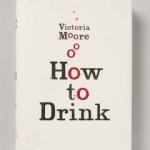How to drink… tea
Author: Guest Blogger
 Despite the title, we haven’t entirely given up wine for the New Year. Wine Matters has, however, just finished Guardian wine writer Victoria Moore’s new book ‘How To Drink’ and what an interesting read it was too. One of the highlights, of course, was a mention of our very own Jasper Morris MW who, as well as being a wine connoisseur (and our Burgundian buyer) is also something of a tea aficionado. Here’s a snippet from the book:
Despite the title, we haven’t entirely given up wine for the New Year. Wine Matters has, however, just finished Guardian wine writer Victoria Moore’s new book ‘How To Drink’ and what an interesting read it was too. One of the highlights, of course, was a mention of our very own Jasper Morris MW who, as well as being a wine connoisseur (and our Burgundian buyer) is also something of a tea aficionado. Here’s a snippet from the book:
“Jasper Morris, as master of wine and a buyer for the merchant Berry Bros. & Rudd, is as keen on tea as he is on Bordeaux and Burgundy. He keeps his wine in a cellar, but his tea is stashed in his wardrobe behind his winter jumpers where it remains warm and dry. He particularly enjoys Pu Erh, which is sold in dried-out cakes; a good vintage can, much like wine, can be aged for over a decade, becoming increasingly complex in flavour the longer it is kept. Such fine tea does not come cheap. Jasper once spent HK$3,800 on a small amount of Pu Erh. How much, I asked him, would that be in Sterling? ‘About the same price as a case of Chasse-Spleen’*, he explained breezily, leaving me not very much the wiser. ‘There are twelve bottles in a case and I have about enough tea to make twelve pots, so that seemed about right’. This is probably not the sort of thing you would neck with fried eggs and bacon at breakfast; Jasper drinks his fine tea with his wife in the afternoon when they want to reward themselves and have time to appreciate it…”
*Or about £320 at current exchange rates at the time of writing
We spoke to Jasper in a bit more detail about his love of tea and here’s what he had to say:
Victoria was disappointed when I said that I did not actually keep my cakes of tea in the cellar alongside my bottles of wine, but unfortunately the humidity which is desirable for the wine would soon turn the tea mouldy. Instead the young teas are living in a cupboard at room temperature.
I have a few packets of older vintage dated teas, including some 1953 of Vietnamese provenance and an amazing 1975 Pu Erh kept for very special occasions. The extraordinary thing about these teas is that you can infuse the same leaves up to a dozen times, being careful to pour off all the water each time, and every infusion gives you a different range of aromas and flavours. Early infusions are tarry and with quite a rough texture but then more fruit appears, with sweeter notes, then they might become more flowery and deliciously subtle – and so it continues until eventually the first signs of dilution appear and it is time to move on.
Click here to buy How To Drink and here to learn more.


